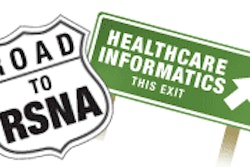CHICAGO - Combining individualized picture wristbands with DICOM modality worklist capability can ensure positive patient identification and yield patient safety dividends, according to researchers from the University of Texas M. D. Anderson Cancer Center (MDACC) in Houston.
While there has been expanded attention by healthcare institutions and publicity in the popular media on patient safety issues relating to medication or surgical errors, there has been little focus on errors in diagnostic imaging departments -- and those can be just as important, according to Rebecca Downs. She presented the MDACC's experience Wednesday at the 2004 RSNA meeting.
"If you have an inappropriately labeled film or digital image, that can be just as detrimental as a misadministered medication," Downs said.
To ensure positive identification of patients, MDACC began outfitting all patients that enter the radiology department with individualized wristbands, which feature a color picture of the patient, medical record number (MRN), date of birth, sex, and MRN barcode.
Pictures are taken with a digital camera upon arrival, and a polyester wristband is then printed and placed on the patient, Downs said. The photos are stored as JPEG files for reuse and later retrieval, if necessary.
The barcode on the wristband is then scanned at the time of the imaging procedure using a barcode scanner attached to the modality. At that point, the imaging modality queries the RIS for the DICOM worklist using the standard's modality worklist function, she said.
The RIS then returns to the modality a list of procedures that patient has scheduled for that day. As a result, the risk of data-entry error is greatly reduced, Downs said. Images are then identified correctly for that patient.
Response has been overwhelmingly positive from both patients and other specialty areas in the hospital, Downs noted. No patients have refused to have their picture taken, and some have even stopped in the department for a wristband to wear to nondiagnostic imaging appointments, she said.
"We've also had some patients who've wanted to take their pictures home with them," she added.
In the future, MDACC is planning to roll out the system to 35 diagnostic imaging patient reception and nursing areas. The institution is also evaluating the possibility of adding radiofrequency identification (RFID) technology to the wristband, allowing for automatic tracking of patient movement throughout the division, Downs said.
By Erik L. Ridley
AuntMinnie.com staff writer
December 2, 2004
Related Reading
Telerad services solve problems, generate revenue, December 1, 2004
PACS plus paperless proves powerful, November 29, 2004
Copyright © 2004 AuntMinnie.com



















